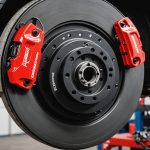Importance of Coolant Mixtures in Cold Weather
Ensuring proper coolant mixtures is critical for optimal engine performance and temperature regulation, especially during the colder months. Vehicles rely on these mixtures to prevent overheating and freezing, maintaining the engine’s operational integrity. In regions like the UK, where temperatures can drop significantly, inadequate coolant may lead to a host of issues. Notably, engines face challenges such as increased frost and decreased efficiency in these colder climates.
One of the main functions of a cooling system is to provide frost protection. When coolant mixtures are not maintained adequately, vehicles are at a higher risk of engine failure. This necessity becomes apparent when considering that statistics indicate a significant percentage of engine failures are due to improper coolant management in cold temperatures.
Topic to read : Mastering Your Braking Technique: Essential Tips for Driving with Upgraded Ceramic Brake Pads
Maintaining the correct balance in the cooling system is not just preventive but also essential for smoothing cold weather vehicle performance. To ensure that vehicles can handle the sub-zero conditions of a UK winter, it is important for drivers to pay close attention to coolant levels and quality.
In summary, cooling system maintenance is not merely a routine task but a vital element in extending the longevity and reliability of any vehicle’s engine.
Also to see : Exploring the Impact of Ambient Temperature on Tire Air Pressure and Vehicle Safety: What Every Driver Should Know
Understanding Coolant Types and Their Properties
Choosing the right antifreeze types is essential for effective engine temperature control. A coolant’s composition heavily influences its performance and suitability for different climates.
Ethylene Glycol vs. Propylene Glycol
Two popular antifreeze types are ethylene glycol and propylene glycol. Ethylene glycol is renowned for its superior heat transfer capabilities, making it a common choice in vehicles requiring robust engine temperature control. However, its toxicity requires careful handling and disposal. Conversely, propylene glycol is less toxic, making it safer for use in situations where environmental impact is a concern. Its slightly reduced thermal efficiency compared to ethylene glycol can be offset by its safety benefits, offering an alternative for those prioritising environmentally friendly options.
Additives and Their Functions
Additives are integral to coolant composition, enhancing properties such as corrosion resistance, longevity, and overall effectiveness. These compounds prevent rust and mineral build-up, ensuring that the cooling system remains efficient. By protecting metal components within the engine, additives prolong the lifespan of your vehicle’s cooling system, ultimately contributing to consistent performance.
Concentration Levels and Their Effects
The optimal concentration level of coolant can significantly impact its ability to maintain ideal engine temperatures, particularly in the UK’s variable climate. Proper balance ensures effective freezing point suppression and heat transfer. For most applications, a 50:50 mix offers adequate protection against freezing and overheating. Adjusting this ratio in response to seasonal shifts can optimize engine performance and safeguard against potential temperature fluctuations.
Recommended Coolant Mixtures for UK Winter
For UK winters, achieving the ideal coolant ratio is essential for ensuring frost protection and optimal engine performance. The recommended coolant-to-water ratio varies based on regional climate requirements, but for the UK’s typically mild winters, a 50:50 mix of coolant and water is often advised. This ratio provides adequate freeze protection down to approximately -37°C, safeguarding against potential engine damage.
Exploring the market, pre-mixed coolant options can be highly convenient. These products are designed to deliver the right balance without the need for further dilution, saving time and ensuring consistency. When selecting a pre-mixed solution, consider popular brands like Prestone, Halfords, or Comma, which are formulated to withstand the UK’s variable winter temperatures. Each offers reliable anti-freeze properties and protection against corrosion and overheating.
Experts suggest considering the compatibility of coolants with your specific vehicle make and model. Many mechanics recommend brand-specific coolants for precision performance. Notable brands include Toyota Red, Ford Super Plus, and Vauxhall Dex-Cool, each tailored for their respective vehicles, ensuring optimal performance and reliability during cold months.
By following these winter mix recommendations, vehicle owners can enhance performance and extend engine life through the colder months.
Effects of Improper Coolant Mixtures
Using an improper coolant mixture can pose serious engine damage risks. One common mistake is adding too much water to the mixture. While it might seem harmless, excess water can dilute the coolant’s antifreeze properties, leading to frost effects. When temperatures drop significantly, the increased water content can cause the coolant to freeze, potentially resulting in cracked engine blocks or damaged cylinder heads.
In addition to physical damage, diluted coolants impact vehicle performance issues. During winter months, an engine’s ability to maintain optimal temperatures is crucial. An incorrect mix can lead to overheating or inadequate heating of the vehicle’s interior, making it uncomfortable for passengers, and taxing on the engine’s lifespan.
The consequences of too much water in the coolant are especially noticeable when temperatures plummet. The vehicle may struggle to start in cold conditions or experience poor acceleration as the frozen components restrict smooth engine operation. Maintaining the precise balance of antifreeze and water is essential for protecting your vehicle and ensuring that it runs efficiently, particularly during harsh winter months. Proper maintenance of coolant mixtures is key to avoiding costly repairs and keeping your engine running smoothly in varying weather conditions.
Maintenance Tips for Optimal Coolant Performance
Ensuring your vehicle’s coolant system is in top condition is crucial for vehicle care.
Regular Monitoring of Coolant Levels
To maintain optimal performance, regularly check the coolant levels. Maintaining sufficient levels is vital, especially in winter, as inadequate coolant can lead to engine overheating and damage. Simply lift your vehicle’s hood and inspect the coolant reservoir to ensure it is at the recommended level. If necessary, top it off with the correct mixture of coolant and water.
Testing Coolant for Effectiveness
Periodic coolant testing is essential to assess its efficacy. This entails checking the coolant’s freezing point and acidity, which you can do using an antifreeze tester. These tests ensure your coolant can withstand low temperatures and has not become corrosive, safeguarding your engine parts from damage.
Timing for Coolant Replacement
Regular maintenance checks should include coolant replacement at recommended intervals. Generally, it is advisable to replace your vehicle’s coolant every two to five years or based on the manufacturer’s guidance. System flushing helps remove contaminants that might have accumulated over time, ensuring your coolant system operates efficiently.
By following these steps, the longevity and efficiency of your vehicle’s cooling system are maximized.
Conclusion and Actionable Takeaways
Preparing your vehicle for winter involves multiple steps that ensure its optimal performance. To begin with, pay careful attention to your coolant mixture. It’s crucial to maintain the right balance between antifreeze and water to prevent your engine from freezing or overheating. Proactive maintenance includes checking the mixture’s ratio, typically a 50/50 mix, although this may vary according to specific climate needs.
To further enhance performance optimization during colder months, follow these actionable steps:
- Inspect your battery to prevent cold-weather failures.
- Ensure your tires are winter-ready and appropriately inflated.
- Examine wiper blades and replace them if necessary for clear visibility.
Vehicle winterization is not just about immediate fixes but also about ongoing vigilance. Engage in routine checks to catch minor issues before they become major problems. Consult your vehicle’s manual for tailored maintenance advice.
For those seeking more detailed guidance, numerous resources are available. Vehicle manuals, automotive websites, and professional mechanics can provide personalized strategies for vehicle winterization and maintenance. Taking these steps helps prolong your vehicle’s lifespan and ensures safety during winter driving conditions.










